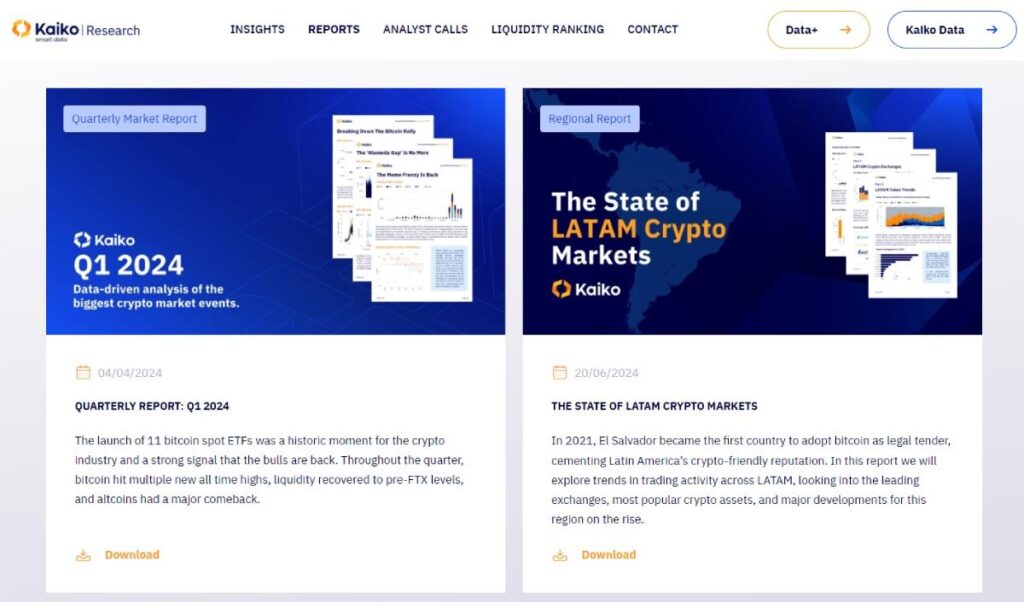
Kaiko Research, a platform providing insights and analysis on the crypto market, has revealed that Latin American users favor stablecoins over Bitcoin. According to their report, 40% of the region’s crypto trading involves USDT.
It’s no surprise that many people are drawn to Tether, the most highly capitalized stablecoin. These low-volatility assets provide reassurance, being pegged 1:1 to the US dollar. This preference is even more pronounced due to monetary instability.
“The biggest regional trend has been the rise of Brazil. The BRL today dominates crypto trading, with a market share of 53% versus the Mexican Peso, the Argentinian Peso, and the Colombian Peso. While BRL has lost some share to MXN since 2023 it has remained the most popular regional currency since 2021”.
To delve deeper into stablecoins, we suggest checking out this post.
According to Kaiko’s study, seven crypto exchanges offer trading pairs with fiat currencies from Latin America. These exchanges include Binance, Kucoin, Bitso, Mercado Bitcoin, Htx, Okx, and Bitfinex. Binance is the most popular, especially in countries like Venezuela and Argentina.
The firm’s researchers corroborate a Chainalysis study published a few years ago, which established that the pro-USDT trend began in 2021. According to Kaiko’s analysis, 40% of Latin American crypto trading involves the largest stablecoin in the market. Furthermore, almost half of the transactions involving the Brazilian real also include stablecoins.
Stablecoins dominated trading on three of the seven exchanges highlighted in the publication. Bitcoin’s trading volume only surpassed stablecoins on Mercado Bitcoin, a popular Brazilian exchange.
If you’re curious about crypto adoption in Latin America, we encourage you to read our post.

Kaiko’s report unveils interesting findings: trading pairs involving stablecoins and fiat currencies accounted for 63% of the trading volume among the top ten pairs.
“One positive signal from the region is that between January and May 2024, LATAM volumes grew at a faster pace than USD markets, which shrunk by a few percentage points relative to January. While the Argentinian Peso (ARS) is the lowest volume LATAM currency in nominal value, it increased by more than 400% year-to-date. The ARS was boosted by surging inflation and currency depreciation.
While inflation has retreated in Brazil and Mexico, it exceeds 200% in Argentina. Political uncertainty in the region has also risen, contributing to increased FX volatility. In late 2023, Argentina elected the far-right libertarian Javier Milei, who promised drastic reforms and budget cuts. In June, Mexico elected its first female president, who secured a larger than-expected majority, clearing the way for constitutional changes”.
Subscribe to the Purse.io Newsletter and stay updated with our content. We publish weekly educational material about Blockchain and cryptocurrencies, as well as the latest news in the sector. Follow us on social media for updates on exciting crypto events and everything related to Hamza.biz, the first Web3 Marketplace powered by the Loadpipe protocol. This solution is designed to elevate e-commerce by ensuring low gas fees and trading freedom. Click here to explore our roadmap for Hamza.
Further news:
- Marathon Digital launches Bitcoin mining project to provide heating in Finland.
- Italy is set to implement stricter crypto regulations, as reported by Reuters.
- Turkey Set to Roll Out 0.03% Tax on Crypto Transactions.
- Brazil’s largest bank offers Bitcoin and Ethereum services to all its clients.
- Zimbabwe seeks input to develop a crypto regulatory framework.
- South Korean Agency Suggests Crypto Tax Could Be Postponed or Abolished.
- Deutsche Bank and Bitpanda Forge New Deal to Streamline Crypto Transactions.
- Rwanda is Not Falling Behind: Working on its CBDC.
- User loses millions on Binance due to malicious Google Chrome plugin.